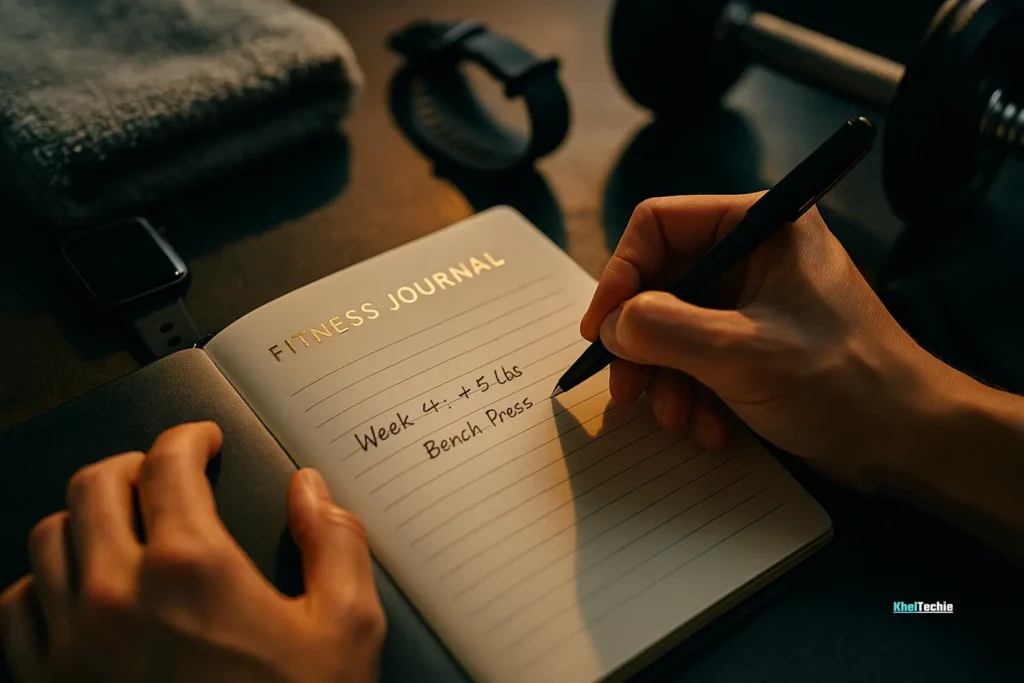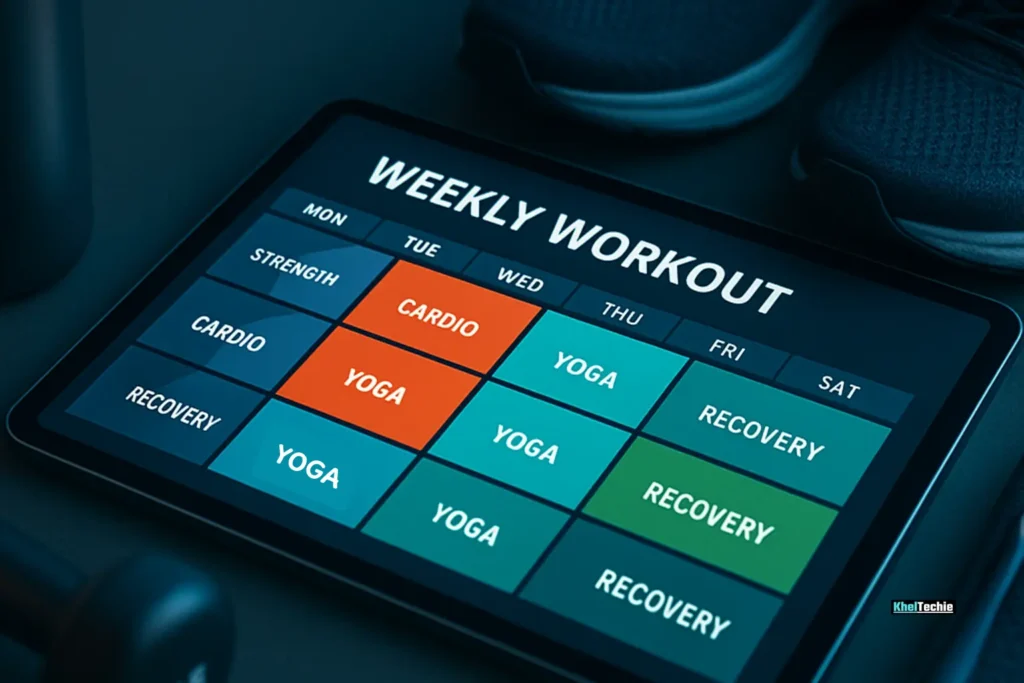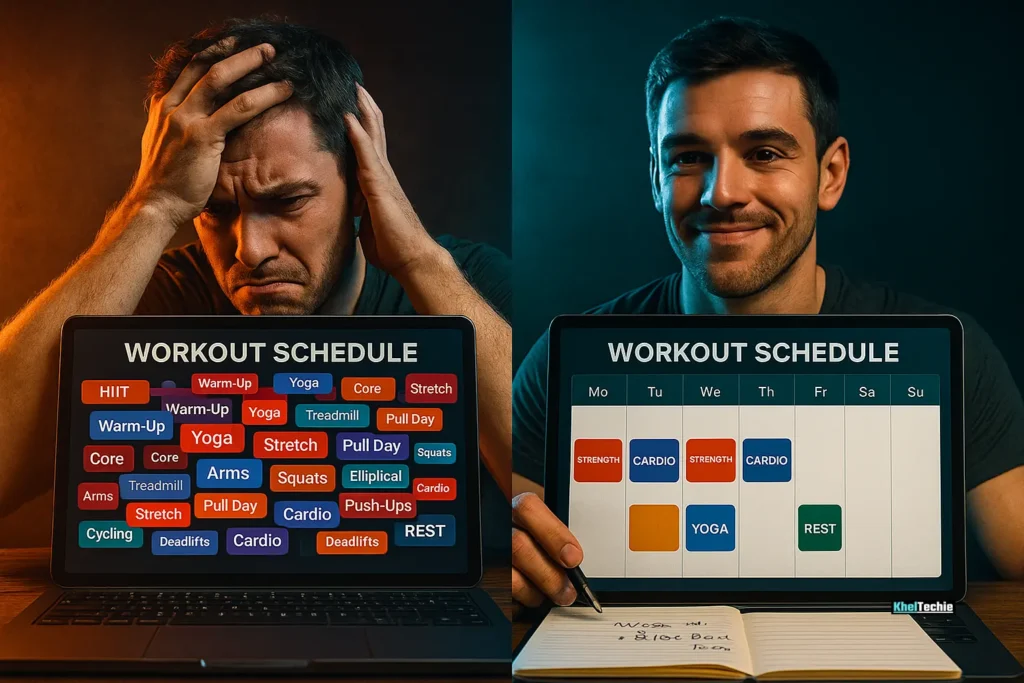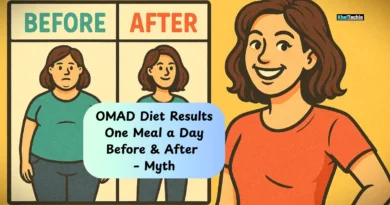How to Create Personalized Workout Calendar (2025 Edition)
Customize Your Fitness Plan & Crush Every Goal
Why You Need a Personalized Workout Calendar
Let’s face it, going to the gym without a plan is like flying blind. You might be working hard, but are you working smart?
This is where a personalized workout calendar comes in. Whether you’re trying to build muscle, lose weight, or just stay active, having a structured plan tailored to your goals, lifestyle, and energy levels can make all the difference.
But how do you actually create one that works for YOU? That’s exactly what we’ll cover in this article. By the end of it, you’ll have a clear roadmap to design a workout calendar that fits your life, not the other way around.
Also read – Best Fitness YouTube Channels to Follow in 2025

What Is a Personalized Workout Calendar?
Think of a personalized workout calendar as your monthly GPS for fitness success. It’s more than just scribbling gym on your phone’s calendar app. It’s a strategic, goal-focused plan that maps out:
- When you’ll work out
- What type of workouts you’ll do
- Rest days
- Progress check-ins
- Adjustments based on your performance
It’s like having a personal trainer in your pocket, minus the hourly fee.

Why Creating a Personalized Workout Calendar Matters
1. Writing Down Goals Boosts Achievement
According to a study by Dr. Gail Matthews, a psychology professor at Dominican University of California, individuals who write down their goals are 42% more likely to achieve them compared to those who don’t. This emphasizes the power of committing goals to paper, as it helps clarify intentions, increase motivation, and foster accountability. Incorporating this practice into a personalized workout calendar can significantly enhance one’s commitment to fitness objectives.
2. Tracking Exercise Improves Health Outcomes
A study by Kaiser Permanente found that routinely asking patients about their physical activity levels, a practice termed “Exercise as a Vital Sign” was associated with modest but significant improvements in weight loss among overweight patients and better glucose control in individuals with diabetes. This highlights the importance of tracking exercise, as integrating it into one’s routine can lead to meaningful health benefits.
3. Regular Physical Activity Enhances Heart Health
The American Heart Association recommends at least 150 minutes of moderate-intensity aerobic activity per week. Regular physical activity strengthens the heart muscle, improves blood circulation, and can lower blood pressure and cholesterol levels. A personalized workout calendar helps ensure consistent exercise, contributing to better cardiovascular health.
4. Structured Rest Prevents Overtraining and Injuries
According to the National Academy of Sports Medicine, overtraining without adequate rest can lead to fatigue, decreased performance, and increased risk of injury. A personalized workout calendar that includes scheduled rest days ensures proper recovery, helping to prevent overtraining syndrome and promote long-term fitness success.
Here’s why a personalized workout calendar makes such a big difference:
| Benefit | Explanation |
|---|---|
| Goal Alignment | Keeps you focused on what you want to achieve (e.g., strength gain, endurance, weight loss) |
| Time Management | Helps fit workouts into your busy schedule |
| Progress Tracking | Makes it easy to see how far you’ve come |
| Motivation Boost | Seeing completed days builds momentum and confidence |
| Injury Prevention | Ensures proper rest and recovery |
Still not convinced? Let’s say you’re juggling work, family, and social life. Without a plan, you might skip workouts when things get hectic. With a calendar? You’ll know exactly when to train and when to take a well-deserved break.

How to Create a Personalized Workout Calendar
Creating your own workout calendar doesn’t have to be complicated. Here’s a step-by-step guide that will help you build one from scratch, even if you’re brand new to fitness.
Step 1: Define Your Goals
Before you start scheduling workouts, ask yourself:
- What do I want to achieve?
- Am I building muscle, losing fat, improving flexibility, or boosting endurance?
- Do I prefer home workouts or the gym?
- How many days per week can I realistically commit?
If your goal is weight loss, you’ll need a mix of cardio, resistance training, and active recovery.
Step 2: Choose Your Training Split
A training split determines which body parts or types of exercises you’ll focus on each day.
Popular Splits:
| Split Type | Days Per Week | Focus Areas |
|---|---|---|
| Full Body | 3–4x/week | All major muscle groups every session |
| Upper/Lower | 4x/week | Alternating upper and lower body |
| Push/Pull/Legs | 5–6x/week | Chest/shoulders/triceps, back/biceps, legs |
| Bro Split | 5–6x/week | Each day focuses on one muscle group (e.g., chest, back, legs) |
Choose one that matches your experience level and time availability.

Step 3: Schedule Around Your Life
Look at your weekly calendar. Block off realistic times for workouts, ideally when your energy is highest.
If you’re a morning person, book workouts before work. Night owls may prefer evening sessions.
Also, don’t forget to include:
- Rest days
- Meal prep blocks
- Sleep windows
You’re not just scheduling workouts, you’re creating a lifestyle.
Step 4: Pick Your Workouts
Now it’s time to decide what you’ll do on each scheduled day.
Categories:
- Strength Training
- Cardio (HIIT, steady-state, etc.)
- Yoga or mobility work
- Sports or recreational activity
- Active recovery

Example Weekly Layout:
| Day | Workout Type | Duration |
|---|---|---|
| Monday | Strength (Upper) | 60 mins |
| Tuesday | HIIT Cardio | 30 mins |
| Wednesday | Yoga + Stretching | 45 mins |
| Thursday | Strength (Lower) | 60 mins |
| Friday | Core & Mobility | 30 mins |
| Saturday | Outdoor Run | 45 mins |
| Sunday | Rest | N/A |
Step 5: Use a Tool or Template
You don’t have to draw this out on paper. There are tons of free tools to help you build a digital workout calendar.
Recommended Tools:
- Google Calendar – Easy to set reminders and sync across devices
- Notion – Great for custom templates and tracking progress
- Excel / Google Sheets – Flexible for beginners
- MyFitnessPal – Tracks both workouts and nutrition
- Apple Health / Fitbit App – Integrates with wearable tech
Color-code your workouts. For example, red for strength, blue for cardio, green for yoga.
Step 6: Add Accountability & Progress Checks
Set weekly check-ins to assess how your workouts are going. Ask yourself:
- Did I complete my planned workouts?
- Did I feel energized or drained?
- Should I increase intensity or volume next week?
Also, share your calendar with a friend or post updates on social media for accountability.
Step 7: Review and Adjust Monthly
Your first month won’t be perfect and that’s okay! The key is to review your calendar monthly and tweak it based on:
- Energy levels
- Progress toward goals
- Time constraints
- Motivation

Common Mistakes to Avoid When Creating a Workout Calendar
Even the best intentions can lead to poor results if you fall into these traps:
| Mistake | Why It Hurts You | How to Fix It |
|---|---|---|
| Overloading the calendar | Leads to burnout and missed workouts | Start small and build up gradually |
| Ignoring rest days | Increases injury risk and slows progress | Treat rest as seriously as workouts |
| Not tracking progress | Hard to know what’s working | Use a journal or app to log reps and weights |
| Copying someone else’s plan | May not match your goals or abilities | Customize your calendar to fit YOUR needs |
| Skipping warm-ups/cooldowns | Raises injury risk | Build them into your calendar |
Also read – Break Through Your Fitness Plateau

Final Thoughts: Take Control of Your Fitness Future
Creating a personalized workout calendar isn’t just about checking boxes, it’s about taking ownership of your health and happiness. By following the steps above, you’ll not only build a stronger body but also develop discipline, consistency, and confidence. So go ahead, grab your favorite tool, pick a template, and start designing your ideal workout calendar today!
Have questions about building your workout calendar? Want to share your own strategy? Drop a comment below, let’s grow together! And if you found this helpful, hit that share button and help someone else crush their fitness goals too.
FAQs
Can I Create a Workout Calendar Without Going to the Gym?
Yes! You can build an effective home-based workout calendar using bodyweight exercises, resistance bands, or minimal equipment. Just ensure variety and progressive overload.
How Often Should I Update My Workout Calendar?
Review and adjust your calendar every 4–6 weeks. This helps prevent plateaus and keeps your routine fresh and challenging.
Should I Include Nutrition in My Workout Calendar?
Absolutely! Nutrition is part of your fitness journey. You can add meal prep blocks or hydration reminders right alongside your workouts.
What If I Miss a Workout?
Don’t panic! Life happens. Simply reschedule or swap it with another day. Consistency matters more than perfection.
Can I Use a Paper Planner Instead of Digital Tools?
Of course! Some people find physical planners more motivating. Try bullet journals or printable workout calendars from sites like Canva.
How Do I Stay Motivated With My Workout Calendar?
Try these tips:
Set micro-goals
Track progress visually
Celebrate milestones
Join a fitness community
Is It Okay to Repeat the Same Workouts?
Repeating workouts is fine, especially for beginners. But over time, introduce variety to keep challenging your muscles and mind.
What If I Don’t Know Which Exercises to Do?
Use reputable sources like:
ACE Fitness Exercise Library
ExRx.net
YouTube channels like Jeff Nippard, Athlean-X, or Yoga With Adriene
Can I Make a Workout Calendar for Weight Loss?
Yes! Focus on:
High-intensity interval training (HIIT)
Circuit training
Strength workouts to preserve lean muscle
Active recovery days
How Long Should Each Workout Be?
Most workouts should last between 30–90 minutes, depending on intensity and goals. Prioritize quality over quantity





Pingback: How To Restart Your Fitness Journey After A Setback
Pingback: Budget-Friendly Home Recovery Tools: Heal Smarter!
Pingback: Fun & Healthy Wellness Challenges For Families In 2025